Induction lamps: device, types, scope + rules of choice
Today, consumers are increasingly choosing energy-efficient household and industrial lighting devices. However, in addition to saving, the backlight quality also plays an important role. A worthy alternative to traditional light sources are induction lamps.
They emit a soft light, pleasant to the eyes, that does not change the objective perception of objects. Let's understand together the device and the principles of operation of induction lamps.
The content of the article:
Device and principle of operation
The primary light source in the induction bulb is a plasma artificially created as a result of the ionization of the gas mixture by the RF electromagnetic field.
The current generates an alternating electric field, causing the occurrence of a gas discharge in a glass flask. Excited mercury generates UV radiation, which, thanks to the phosphor, is converted into visible light.
Induction lamps belong to the category of gas-discharge light sources, more about which is written in this stuff.
The design of the induction lamp includes three basic functional elements:
- gas discharge tube;
- ferrite ring induction coil;
- electronic ballast.
Inside the tube are drops of mercury amalgam. The flask itself is filled with a gas with low chemical reactivity - argon / krypton, and its inner surface is covered with an inorganic phosphor.
An induction coil and an electromagnet form a high-frequency magnetic field, under the influence of which free electrons accelerate, collide and excite mercury atoms.
As a result, ultraviolet radiation is formed. By a phosphor it transforms into a visible bright glow.
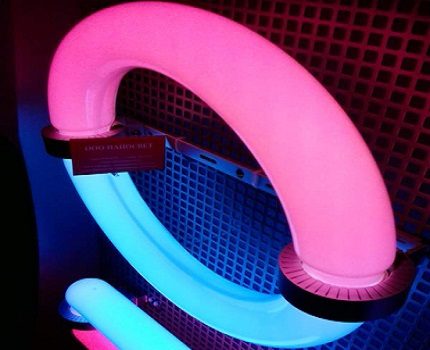
The electronic ballast is connected to a 12 V / 24 V DC voltage source or to a sinusoidal voltage network of 120 V / 220 V / 380 V.
The starter control system transforms an alternating current of 50 Hz into a direct current, and then into a high-frequency current from 190 kHz to 2.65 MHz.
This RF current creates a magnetic field. In addition, the starter generates a strong start pulse, which ignites an induction light source.
To ensure stable operation of the electrodeless lighting device, the control system can also change the strength of the electric current and its frequency through the inductor coil.
In order to reduce the scattering of the high-frequency electromagnetic field, the lamps are equipped with ferrite screens and / or special cores.
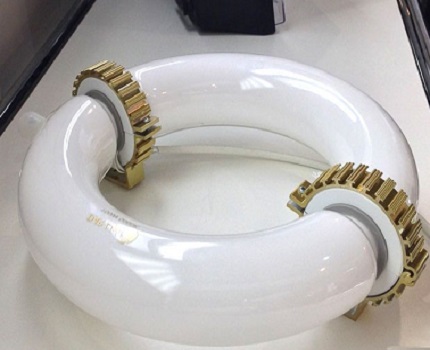
This makes the cylinder of the lighting device more uniform and approximately equally loaded in temperature.
During prolonged operation of such lighting, cracking of the glass bulb is not observed; over time, the electrode material does not deposit on the walls.
The absence of incandescent electrodes needed to ignite conventional bulbs allows you to achieve an incredibly long life of induction lamps - up to 120,000 hours of operation.
Some manufacturers even claim a life of up to 150,000 hours. This figure is 10 times the durability of simple fluorescent light bulbs, gas-discharge LVD, mercury-tungsten and sodium lighting.
In addition, the service life of induction light sources is approximately 2–3 times longer than the life of LEDs.
Varieties of induction lamps
For the first time, a lamp without contact electrodes was demonstrated by Nikola Tesla back in 1893 at the World Exhibition in Chicago. The lighting device presented to the public was powered by the magnetic field of the Tesla coil. And the first reliable prototype of an induction light source was created by John Melvin Anderson in 1967.
Classification of electrodeless bulbs
In 1994, General Electric introduced the GENURA compact energy-saving lamp with an integrated high-frequency generator in the base.
Serial production of induction fluorescent lamps started in the 1990s.

Depending on the type of construction, induction light sources are:
- with built-in ballast - an electric generator and a lamp are combined in one unit;
- with separate electronic starter - the external generator and the lamp are exploded devices.
Depending on the method of placing the coil, these lamps are also divided into devices with an external (low-frequency) and internal (high-frequency) inductor.
In the first case, a coil with a ferromagnetic rod is twisted around the cylinder. The operating frequency of light bulbs with external induction lies in the range of 190-250 kHz.
They have better conditions for intensive heat exchange with the environment, since the coil outside the sealed bulb easily dissipates the heat generated by the device. The service life of low-frequency devices is up to 120,000 hours.
In the second case, an induction coil with a wound core is located inside a glass bulb. The generated heat is in the cavity of the lighting device, and therefore lamps with internal induction are heated more strongly.
Their operating frequency is in the range of 2-3 MHz. The resource of such light sources does not exceed 75,000 hours.

Both high-frequency and low-frequency lamps have a large margin of safety and have a long service life.
Execution options and marking
Currently, companies that specialize in lighting have launched mass production of induction lamps of various shapes. Design features and variants of execution are traced in their marking.
The first two alphabetical characters in the code determine the type of device (IL - induction lamp), the third indicates the form. After the letter designation, the power is usually declared.
ILK - round induction bulbs. They have high light output and a wide range of spectrophotometric temperatures. Suitable for installation in round and oval lamps.
Such light sources are actively used for lighting warehouses, spacious production and repair shops, shopping malls, sports bases.
ILSH - ball-shaped lamps. They are made in the traditional form of conventional high-power vacuum lighting devices. Create a soft light and light up almost instantly.
Suitable for replacement light bulbs energy-efficient light sources without the need to change the lamp itself.
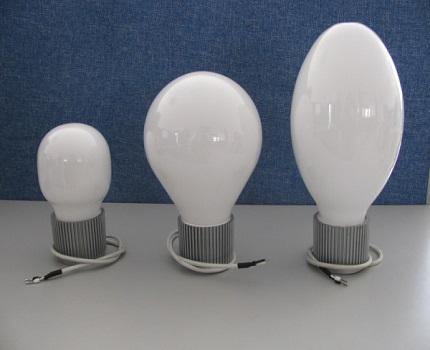
ILU - U-shaped bulbs. They are devices with a separate generator. They emit a bright white light, do not flicker during operation.
They are used to illuminate stadiums, tunnels, subways and highways, advertising stands, signboards and other objects.
ILB, ILBK - lamps with an annular shape of a bulb. In them, the generator, coil and tube are combined in a single unit. Generate soft light that does not blind, quickly and easily ignite at temperatures up to -35 ° C.
Similar constructions are used to illuminate hotels and trading floors, park areas and squares, and private household territories.
Separately, it should be said about induction phytolamps for plants. They differ in the shape of the glass bulb and the color of the radiation.

Phytolamps induction GP and VG are intended for illumination of plants at the stage of vegetative growth. The blue radiation spectrum prevails in them.
FL devices are used in the initial phase of fruit formation, as well as to accelerate the formation of colors. They emit red light.
KL model bulbs are universal. Such light sources make it possible to control the growth of plantings. They generate saturated red light, necessary for the full development of plant fruits and abundant flowering.
Labeling examples:
- ILK-40 - 40 W round induction lamp;
- TILPVG-120 is a rectangular induction phytolamp with a power of 120 W, a VG model for the initial stage of vegetative plant growth.
The radiation of an induction bulb corresponds to the solar spectrum by 97%, and therefore is excellent for artificial lighting of greenhouse complexes.
Benefits of Using IL
Electrodeless lamps generate soft light, comfortable for perception by the eyes. Color tones are not distorted.
The brightness of such lamps can be changed within 30-100% with a simple dimmer switch for devices with a filament.
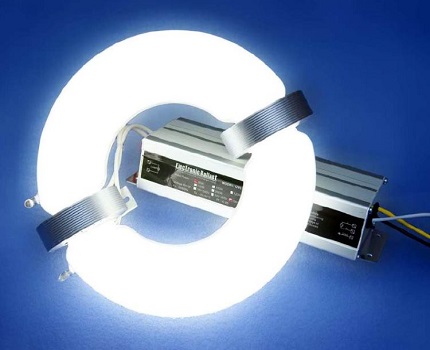
Even after 75,000 hours of operation, induction devices retain the level of light power at around 80-85% of the original.
Conventional LL daylight near the end of its useful life loses up to 55% brightness. On their flasks dark opaque circles form over time.
The advantages of using induction electrodeless lamps:
- Efficiency of 90%;
- service life up to 150,000 hours;
- light output is more than 90-160 lm / W;
- optimal conditions for visual perception of objects;
- operating temperature range from -35 ° C to +50 ° C;
- color rendering coefficient Ra˃80;
- high energy efficiency indicators;
- minimum flask heating;
- unlimited number of start / shutdown cycles;
- lack of ripple;
- the ability to adjust the intensity of the glow;
- Warranty period is 5 years.
Manufacturers claim that induction light sources have better technical characteristics than LEDs and are several times cheaper. The energy consumption of these types of bulbs is about the same.
Application of electrodeless lamps
Modernized lighting devices that do not contain thermal cathodes and filaments are used for both indoor and outdoor lighting.
The scope of use of IL
Electrodeless lamps have built-in protection against short circuit (short circuit) and power surges.
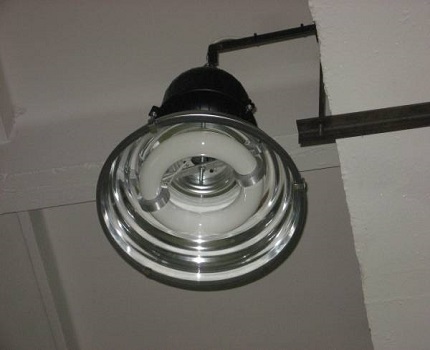
Due to the high light output with a small electricity consumption, they are used in various fields:
- to organize high-quality street lighting;
- in shopping and hotel complexes;
- in office centers and domestic premises;
- for lighting spacious workshops and warehouses at industrial facilities;
- to highlight greenhouses and greenhouses;
- for lighting motorways and tunnels;
- for the organization of explosion-proof lighting at the gas station.
Due to the stability of the parameters, mercury electrodeless lamps are used as precision point sources of UV radiation in spectrometry.
In addition, the principle of induction gas excitation is applied in the process of pumping energy from external sources into the working environment of lasers.
However, due to the presence of high-frequency electromagnetic radiation, induction lamps are not installed at railway stations and airports.
Also, these bulbs can cause interference while working with ultra-sensitive laboratory and medical equipment. Therefore, in rooms with similar special equipment, it is not recommended to use them.
Street and road lighting
The most effective road lighting can provide street lamps with induction energy-efficient lamps. This type of lighting guarantees comfortable visibility for both drivers and pedestrians.
Road lights have a solid cantilever mount and are mounted on poles, as well as standard poles. They are used to illuminate park areas and squares, streets and squares, highways and parking lots, embankments, courtyards.
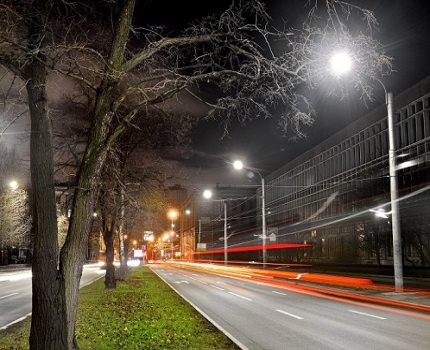
An example is the instantaneous launch of lighting on motorways in places where cars and pedestrians move.
In addition, a sensitive motion sensor can be combined with a programmable twilight switch.
The device is adjusted to specific lighting values. If the light level is insufficient, the sensor will give a command to turn on the lamps.
The ability to dimming allows the successful use of intelligent systems for the effective management of street lighting.
By controlling the brightness of induction lamps using a power regulator and an astronomical timer, you can achieve real savings in electrical energy, as well as significantly reduce maintenance costs.
The introduction of intelligent systems makes it possible to monitor the state of lighting, measure and analyze data on the energy consumption of luminaires.
Safe industrial light sources
The use of devices based on induction technology is a cost-effective solution for the modernization of lighting systems of industrial enterprises.
Induction lamps are of high build quality and do not require regular maintenance. They significantly reduce electricity consumption and help increase production profitability.
Industrial lighting devices have a protection class of IP54, which allows operation even in conditions of pollution and high humidity. They can be installed in unheated and poorly ventilated rooms.
Tempered glass in combination with silicone insulation reliably protects the housing from the ingress of foreign impurities and water.
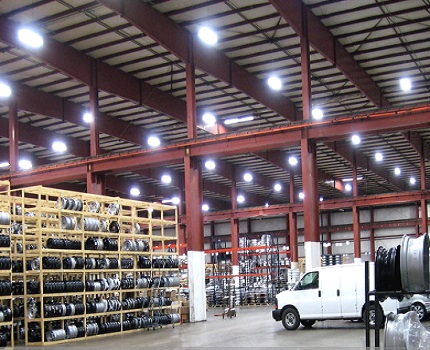
An anti-static polymer coating is applied to the case of induction explosion-proof fixtures.
Thanks to this composition, lighting devices are characterized by shock resistance and resistance to negative temperatures.
The special intrinsically safe coating does not deteriorate even in an alkaline and acidic environment and is able to maintain its properties for 30 years.
Backlighting in greenhouses and greenhouses
The spectrum of the induction lamp corresponds to 75% of the photosynthetically active radiation necessary for active growth and long flowering of plants.
That is why electrodeless type bulbs are used as additional sources in greenhouses and greenhouses to illuminate standard and compact grow boxes, direct, lateral and inter-row illumination of plants.
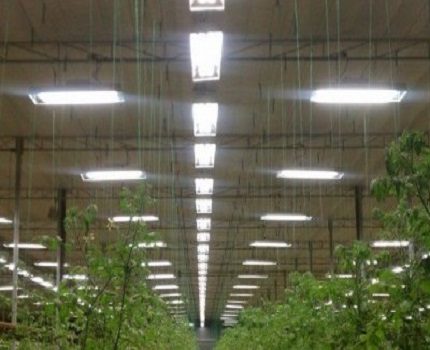
The use of such lamps in grow boxes makes it possible to significantly reduce the cost of cooling tanks.
The use of IL also allows you to pre-design and separately install lighting for each zone of the greenhouse.
To correct and direct the maximum of light to the desired sector use optical surfaces - screens. They focus radiation on a specific site.
And with the help of special reflectors, artificial light is evenly distributed over the entire height of green spaces.
Rules for choosing IL
When choosing induction lighting devices, it is important to consider their design features, operational characteristics, as well as the degree of safety.
Only with this approach, can IL be considered a worthwhile acquisition.
Today in specialized stores it is not difficult to find induction electrodeless lamps with power from 15 W to 500 W. But there are more powerful ones designed for various production needs.
Oval bulb lamps are available for fixtures with standard E14, E27 and E40 lampholders.
There are also special rectangular and circular types of induction lighting devices that can work both in AC and DC.
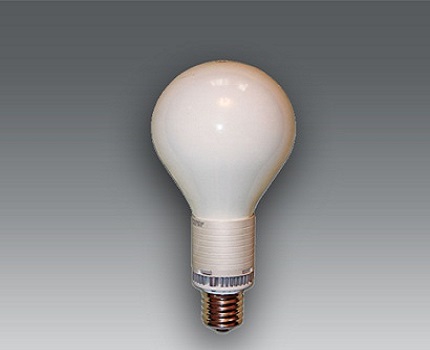
All induction lamps and electrodeless lamps undergo mandatory certification.
Therefore, we can confidently talk about their safety. The amalgam is in a sealed flask and, subject to the basic operating rules, its leakage is excluded.
However, it must be understood, like standard fluorescent lamps, induction lamps require appropriate disposal due to the presence of mercury compounds and electronic components.
A solid amalgam - an alloy of mercury with other metals - can be reused. Glass from the lamp is also handed over for recycling, but separately from the phosphor.
Lamps with induction technology are not considered environmentally friendly types of lighting, and in this criterion they are much inferior to LEDs.
It must be added that the induction-type bulb does not immediately reach its stable luminous flux. At the start, it gives out about 80% of the total radiation.
To this indicator reached its maximum, an electrodeless lamp needs 2-3 minutes. During this time, the amalgam is sufficiently heated and the required amount of mercury is evaporated.
Conclusions and useful video on the topic
Induction lamps - a new generation of discharge lamps. The principle of operation of this type of lighting:
What makes induction lamps, features of lamps of this type and scope:
Advantages of using modern induction light sources in industrial enterprises:
Correct installation of induction lamps in compliance with all standards and norms allows the efficient use of energy-saving technology. Today, such light sources are a reasonable alternative to traditional approaches to the organization of lighting.
Have experience using induction lamps? Or, after studying the material, have questions? You can ask them in the comment box under the article. There you can share experiences or give valuable advice to visitors to our site.

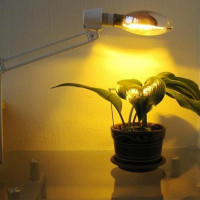 Sodium lamps: varieties, technical parameters, scope + rules of choice
Sodium lamps: varieties, technical parameters, scope + rules of choice 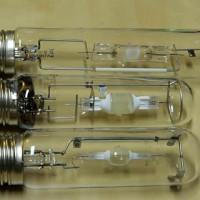 Metal halide lamps: types, device, pros and cons + selection rules
Metal halide lamps: types, device, pros and cons + selection rules 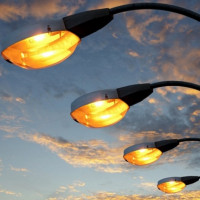 DRL lamps: device, characteristics, selection rules
DRL lamps: device, characteristics, selection rules  LED table lamps: types, selection rules + review of the best manufacturers
LED table lamps: types, selection rules + review of the best manufacturers 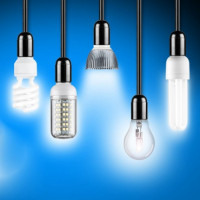 What types of bulbs exist: an overview of the main types of lamps + rules for choosing the best
What types of bulbs exist: an overview of the main types of lamps + rules for choosing the best 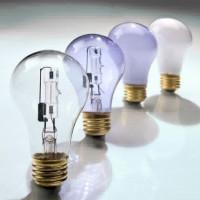 Halogen lamps: device, varieties, nuances of choice + review of the best manufacturers
Halogen lamps: device, varieties, nuances of choice + review of the best manufacturers  How much does it cost to connect gas to a private house: the price of organizing gas supply
How much does it cost to connect gas to a private house: the price of organizing gas supply  The best washing machines with dryer: model rating and customer tips
The best washing machines with dryer: model rating and customer tips  What is the color temperature of light and the nuances of choosing the temperature of the lamps to suit your needs
What is the color temperature of light and the nuances of choosing the temperature of the lamps to suit your needs  Replacement of a geyser in an apartment: replacement paperwork + basic norms and requirements
Replacement of a geyser in an apartment: replacement paperwork + basic norms and requirements
Himself recently installed induction phytolamps for plants in a greenhouse. I chose blue spectrum devices so that photosynthesis would proceed normally. He took into account that the lamp did not get very hot, and evenly distributed light. I also looked that I could work in the winter, functioned normally at lower temperatures. As a result, the lamps were selected, delivered, the plants were fine from them, everything worked.
Good afternoon, Maxim. Optimal conditions for photosynthesis are created by natural light. Spectrally corresponding to incandescent lamps. The influence on the photosynthesis of individual colors was carried out by Professor A. Famintsyn in the 19th century. The result of the study - chlorophyll, absorbing the extreme parts of the spectrum, does not respond to yellow, green, blue. In other words, you created unnatural conditions for plants.
I would love to purchase such lighting devices for the home, because for some reason ordinary energy-saving luminescent ones quickly burn out. LEDs are reliable, but the light from them is somehow too harsh, inanimate, I will not get used to it. With a filament it turns out too expensive. But the current price of more than 1000 rubles. for an induction lamp, puts an end to the possibility of application in everyday life.
Buy from large network retailers who offer warranty on lamps. I met induction lamps with a five-year warranty.Spending 1000r every five years is not at all expensive.